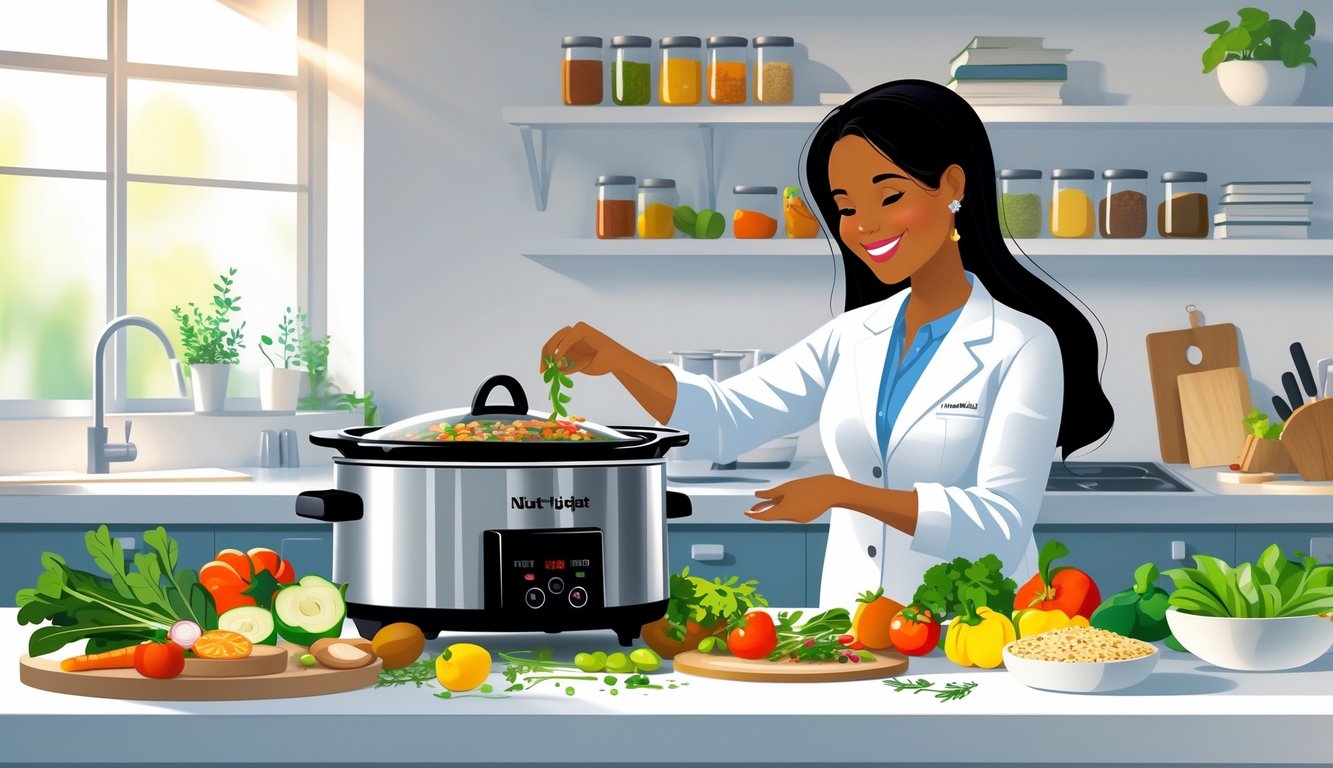
Unconventional Slow Cooker Uses Nutritionists Swear By
Not everything in my slow cooker ends up edible. Sometimes I get bored and try weird hacks. Is it laziness? Maybe. Curiosity? Definitely. That’s how I end up with the next “brilliant” idea.
Potpourri Warmer for a Fresh Kitchen
So, my gym bag stinks. I’m not washing it, I’m just not. Instead, I fill the slow cooker with water, lemon rinds, cinnamon, dried herbs—whatever’s dying in the pantry. My friend (she’s obsessed with air purifiers) comes over and says it’s smarter than candles. Fewer asthma triggers, apparently. I don’t know if there’s science behind it, but at least no paraffin, no VOCs, no open flame—non-toxic appliance reviewers are always yelling about that.
Here’s my only tip: leave the lid cracked or it smells weirdly damp instead of fresh. Don’t walk away for hours. I boiled mine dry once and the safety shutoff tripped—so, yeah, that’s a thing. Burnt sage crust on the edge is gross, but still better than those fake plug-in scents.
Weight Loss and Healthy Habits with Slow Cooking
Something’s always burning in my kitchen, except with slow cookers, it’s just… not. Somehow, I cook more, eat less garbage, and my groceries last. Nutritionists keep repeating the same advice—batch cooking, easy portions, less late-night snacking. It sounds obvious, but it works.
Portion Control and Calorie Management
I can’t eyeball pasta to save my life. With a slow cooker, though, I get built-in portions because the pot only holds so much. Turns out, batch cooking means you accidentally eat less. The Journal of Nutrition says people eat 20% fewer calories this way. Who knew?
I’m not measuring oil at sunrise, so I toss in lean proteins (turkey, beans—turkey chili is cheaper than beef, fills me up), plus whatever veggies are left. Dietitians say this actually matters for calories. I use measuring spoons once, then never again. Garlic, onions, ginger—these save me from adding too much salt, which, yeah, is a thing experts mention on MindPursuits.
If you’re a spreadsheet person, you could divide your total batch by meal count for the week. I never do, but, hey, it’s better than cleaning up every single day or finding out you’ve eaten a week’s sodium in one go. Why don’t slow cookers have a “portion anxiety” button? Someone, please.
Frequently Asked Questions
Forget perfect veggies—I’m still fighting with the cord, and people keep asking why soup tastes better after eight hours. Slow cookers are hands-off, but that tomato stain? Never coming out.
What are the most energy-efficient ways to use a slow cooker?
Nobody told me these things could sneak up on your electric bill. Unplug it when you’re done, obviously, but the Department of Energy says crock pots (not pressure cookers) use less power than a coffee maker if you keep the lid on. I always forget and crank it to HIGH, then walk away. Full pot = more efficient. Don’t bother with “keep warm” for hours. The University of Nebraska–Lincoln has more tips, but who’s reading those manuals?
Can you tell me if cooking meat in a slow cooker requires it to be fully submerged?
I always just plop the roast in there, half sticking out. People argue about this at every potluck. USDA says you don’t have to drown it, but if the top’s not at least half under, you’ll get dry, stringy meat. I rotate it halfway through, but I’m not sure anyone else does. Bacteria freaks me out, but as long as it hits 165°F, it’s fine. The top might dry out, though. That’s just life.
How can I prevent nutrient loss when using a slow cooker?
My broccoli always turned gray and sad after eight hours. Apparently, water-soluble vitamins bail out if you cook too long. I use less liquid now, keep the lid tight, and toss in delicate veggies at the end—advice I stole from nutrition blogs. Don’t put greens in at the start, please. Last 30 minutes only. If you toss the cooking liquid, you’re dumping vitamins. Drink it, make soup, whatever, just don’t waste it.
What’s the reason for placing a tea towel over a slow cooker?
The tea towel trick. First time, I nearly set my kitchen on fire, so—don’t let it touch the heating element. It’s not magic, but bakers on Instagram swear it stops condensation from ruining bread and brownies. No one likes soggy middles. I set a phone alarm so I don’t forget and melt the towel. Yes, I’ve almost done that. Banana bread is not worth a kitchen fire.
Could you explain if cooking on high for 3 hours is equivalent to 6 hours on low in a slow cooker?
People love this myth. I called Customer Support once and the woman was like, “Eh, not really.” Sometimes double time on low = half on high, but only for soups. Big cuts of beef? Nope. Collagen needs low and slow. Potatoes? Sure, nuke them fast if you want weird edges. Real Plans has tips, but bread never bakes the same way twice. Just check early and wing it like the rest of us.
What common mistakes should I avoid when using a slow cooker?
Honestly, I still can’t get over how many people (me included, not proud) just toss frozen meat straight in. Like, I know it’s a bad idea—every food safety person on the internet yells about it, but sometimes I just… forget? Or I’m lazy. Whatever. Oh, and apparently I can’t stop myself from lifting the lid every ten minutes. I know it ruins stuff, but I need to check. Why? No clue. Maybe I like disappointment. The rice always turns into mush, and then, boom, add half an hour to the timer. Genius.
Layering is another thing I mess up. Supposedly, root veggies—carrots, potatoes, you get it—should go on the bottom because they’re stubborn and cook slower. But I keep throwing everything in randomly, and then I’m shocked when my carrots are basically raw and the chicken’s falling apart like it’s been in there for a week. There’s a page with more slow cooker tips, but honestly, I skimmed it, and I still overfill the pot every single time. Measurements? What are those. Then, of course, I act surprised when cleaning up is a nightmare because everything boiled over. Classic.



